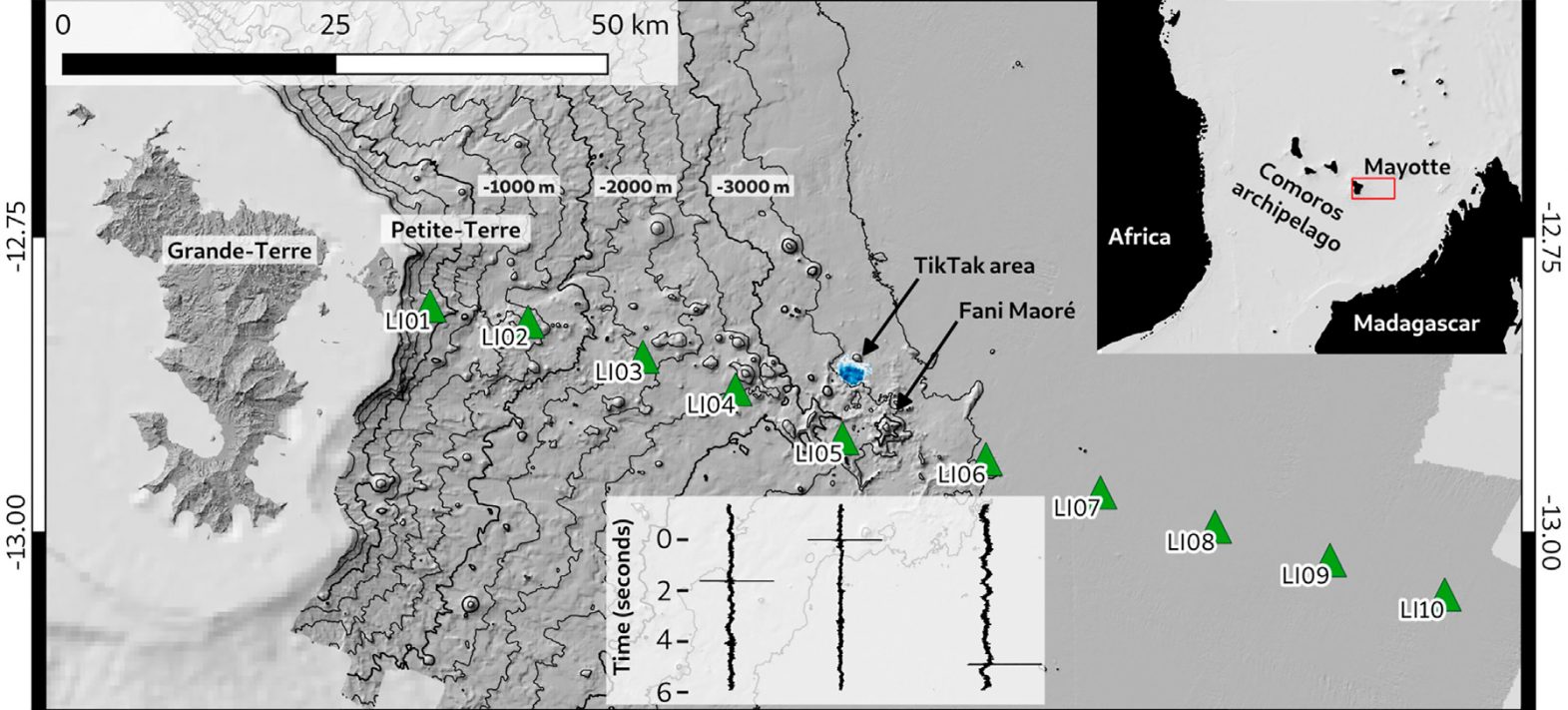Study underwater lava flows by combining bathymetry and hydro-acoustic signals
On the ocean floor, the meeting of lava and water during volcanic eruptions generates acoustic signals that propagate into the ocean. Lava flows are also revealed by bathymetric differentials recorded during oceanographic campaigns. In Mayotte, a study led by IPGP scientists shows how the two techniques work together to give a detailed picture in time and space of the evolution of lava flows at great depths (3000 m).

Publication date: 07/11/2022
General public, Observatories, Press, Research
Related observatories : Volcanological and Seismological Monitoring Network of Mayotte (REVOSIMA), Volcanological Observatory of Piton de la Fournaise (OVPF-IPGP)
Related teams :
Volcanic Systems








